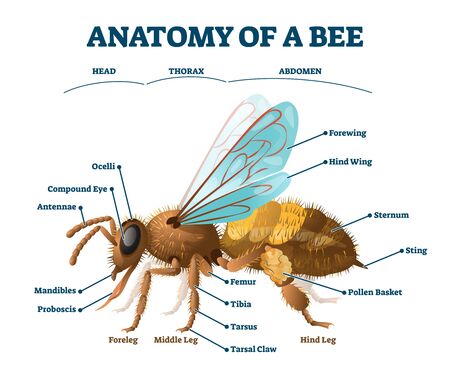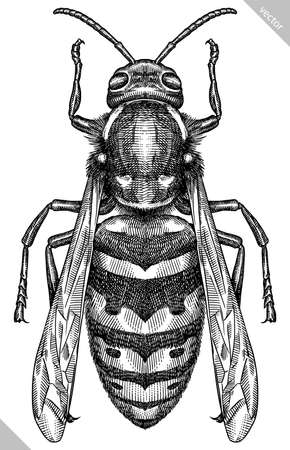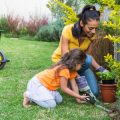1. Understanding the Role of Insects in the Garden
When it comes to gardening, not all bugs are bad. In fact, many insects are essential for a healthy garden ecosystem. Before reaching for the insect spray, its important to understand how different types of insects affect your plants and soil.
Why Insects Matter
Insects play key roles in your gardens natural balance. Some are pollinators, helping fruits and vegetables grow. Others are decomposers that break down organic matter, enriching your soil. Then there are the predators—your natural pest control team. Of course, there are also harmful insects that feed on plants or spread disease. Knowing which is which can save you time, money, and frustration.
Types of Garden Insects
Here’s a simple breakdown of common garden insects and their roles:
| Type of Insect | Role in the Garden | Examples |
|---|---|---|
| Beneficial Pollinators | Help plants reproduce by transferring pollen | Bees, Butterflies, Hoverflies |
| Pest Controllers (Predators) | Feed on harmful pests | Lacewings, Ladybugs, Praying Mantises |
| Decomposers | Break down dead organic matter, improve soil health | Dung Beetles, Ants, Springtails |
| Pests (Harmful) | Damage plants by feeding on leaves, stems, or roots | Aphids, Japanese Beetles, Cabbage Worms |
The Balance of Nature in Your Backyard
Your garden is its own little ecosystem. When beneficial insects outnumber the harmful ones, your plants thrive with minimal human intervention. But when that balance tips—like during an aphid outbreak—you may need to step in. The first step is always proper identification so you know what youre dealing with.
A Closer Look at Soil Health
Certain insects like beetles and ants help aerate the soil as they tunnel through it. Others contribute by breaking down leaf litter and other organic material into nutrients that plants can absorb. Without these tiny workers underground, your garden’s soil would quickly become compacted and less fertile.
Your Takeaway
The more you understand about what lives in your garden and why it’s there, the better decisions you’ll make about pest control and plant care. Learning to identify insects accurately sets the foundation for a thriving garden that works with nature—not against it.
2. Basic Anatomy and Physiology of Common Garden Insects
If youre trying to identify insects in your garden, understanding their basic body parts is a great place to start. Most insects have similar structures, but small differences can help you figure out exactly what kind of bug youre looking at. Knowing these features not only helps with identification—it also gives you clues about how the insect lives, feeds, and interacts with your plants.
Understanding the Three Main Body Sections
All insects have three major body parts: the head, thorax, and abdomen. Heres a quick breakdown:
| Body Part | Main Function | What to Look For |
|---|---|---|
| Head | Sensory input and feeding | Antennae, eyes, mouthparts |
| Thorax | Movement (legs and wings) | Usually has 3 pairs of legs and up to 2 pairs of wings |
| Abdomen | Digestion, reproduction | Smooth or segmented appearance; may include stingers or other special features |
The Role of Antennae and Eyes
Antennae come in many shapes and sizes depending on the insect species. For example, moths often have feathery antennae while beetles have clubbed ones. These structures help insects detect smells and navigate their environment. Insects also have compound eyes made up of many tiny lenses—great for detecting motion.
Mouthpart Types: Clues to Feeding Habits
The shape of an insect’s mouth can tell you a lot about its diet. Here are a few common types:
| Mouthpart Type | Description | Example Insects |
|---|---|---|
| Biting/Chewing | Mouth opens and closes like scissors to eat leaves or other solid food. | Caterpillars, beetles, grasshoppers |
| Piercing/Sucking | A needle-like structure pierces plant tissue to suck juices. | Aphids, stink bugs, mosquitoes |
| Siphoning | A long tube used to sip nectar from flowers. | Butterflies, moths |
| Sponging/Lapping | Sponge-like structures soak up liquids. | House flies, fruit flies |
The Importance of Legs and Wings in Identification
The number and structure of legs and wings are key identifiers. All adult insects have six legs attached to the thorax. Wing patterns can be especially helpful—look at color, size, and even how they fold when at rest.
Winged vs. Wingless Insects:
- Two-winged insects: Flies (Diptera) – only one pair of wings; second pair reduced to small knobs called halteres.
- Four-winged insects: Bees, butterflies – two pairs of wings that may be clear or covered in scales.
- No wings: Some ants (workers), silverfish – usually ground dwellers or fast runners.
A Quick Tip for Gardeners:
If you’re unsure about an insect’s ID, try snapping a clear photo showing its body shape, antennae, leg count, and wing layout. Compare it with field guides or online resources focused on North American species like those from university extensions or entomology departments.
This basic anatomy knowledge will help you get more accurate results when identifying garden visitors—whether they’re pests or pollinators!

3. Visual Identification Techniques
When it comes to identifying insects in your garden, a good eye can go a long way. Visual identification is one of the easiest and most practical methods for American gardeners to recognize both helpful and harmful bugs. By paying close attention to certain physical traits and behaviors, you can make informed decisions about how to manage your garden ecosystem.
Key Features to Observe
Here are some of the most helpful visual cues that can help you identify insects quickly and accurately:
| Feature | What to Look For | Examples |
|---|---|---|
| Color Patterns | Bright colors often signal danger or mimicry; dull colors may indicate camouflage. | Ladybugs (red with black spots), Monarch butterflies (orange and black) |
| Body Shape | The silhouette of an insect can tell you what family it belongs to. | Aphids (pear-shaped), Beetles (oval and hard-shelled), Caterpillars (elongated, soft-bodied) |
| Wings & Wing Position | Note if wings are present, how many pairs, and how they rest when not flying. | Butterflies hold wings upright; flies have one pair of wings; dragonflies keep wings open |
| Legs & Movement | The number of legs and how an insect moves can be very telling. | Spiders (8 legs, jerky movement), Ants (6 legs, fast runners), Grasshoppers (large hind legs for jumping) |
| Antennae | Look at length, shape, and position—some bugs use them for scent detection. | Moths have feathery antennae; beetles often have clubbed or segmented ones |
Behavioral Cues
Sometimes its not just about how an insect looks, but also how it acts. For example:
- Feeding Habits: Leaf holes might indicate caterpillars or beetles; sticky residue could point to aphids or whiteflies.
- Flight Patterns: Butterflies tend to flutter slowly, while wasps move in rapid, direct paths.
- Nesting Sites: Look for paper nests from wasps or silk webs from spiders on plant stems and under leaves.
Use Tools for Better Accuracy
If youre unsure about what youve spotted, consider using a magnifying glass or your smartphone’s zoom feature to get a closer look. You can also snap photos and compare them with reputable online databases such as the USDA Insect Identifier or local extension service websites.
Tip:
Create a small “bug journal” where you note down the insects you encounter along with dates, locations in your yard, plant types nearby, and any damage observed. Over time, this will become a valuable reference for seasonal patterns in your garden.
Remember:
You don’t need to be an entomologist to start recognizing the critters in your backyard—just keep observing!
4. Scientific Tools and Resources for Insect Identification
Identifying insects in your garden doesn’t require a lab coat or a degree in entomology. With the right tools and resources, anyone can become a confident bug detective. Heres how American gardeners can use simple scientific tools and local resources to make insect identification easier and more accurate.
Magnifiers: See the Details
Sometimes, the difference between two species comes down to tiny details like antenna shape or wing veins. A handheld magnifier or a jeweler’s loupe (10x to 20x magnification) can help you observe these features closely. Many gardeners also use clip-on macro lenses for smartphones to take detailed pictures for closer inspection or sharing with experts.
Field Guides: Your Garden Library Essential
A good insect field guide tailored for your region is one of the most valuable resources you can own. These guides provide color photos, range maps, seasonal activity, and ID tips. Look for guides that cover North America or your specific state. Here are some popular choices:
| Field Guide | Best For | Publisher |
|---|---|---|
| National Audubon Society Field Guide to Insects & Spiders | Comprehensive species coverage | Knopf |
| Kaufman Field Guide to Insects of North America | User-friendly layout with photos | Houghton Mifflin Harcourt |
| Bugs of North America (Nature Study Guides) | Younger readers and beginners | Adventure Publications |
Mobile Apps: Tech-Savvy Bug Spotting
If youre out in the garden and spot an unfamiliar insect, mobile apps can offer instant support. Many apps use image recognition combined with community input or expert databases. Here are a few recommended ones:
- iNaturalist: Upload photos and get ID suggestions from AI and community scientists.
- Seek by iNaturalist: Kid-friendly and no account needed—great for quick IDs.
- Picture Insect: Uses AI to identify insects based on photos you upload.
Local Extension Services: Free Expert Help Near You
Your local Cooperative Extension office is one of the best free resources available. Run through land-grant universities, these offices often have Master Gardeners or entomologists who can help you identify insects from photos or samples. They may also offer printed materials or workshops on garden pests and beneficial bugs.
How to Find Your Local Extension Office:
- Visit USDA Land-Grant University Directory
- Select your state, then locate the nearest county office.
- Check if they offer diagnostic services or insect ID clinics.
With these tools at your fingertips—from magnifiers to mobile apps—you’ll be well-equipped to recognize both friends and foes in your backyard ecosystem.
5. Integrated Pest Management and Insect Control Strategies
Keeping your garden healthy doesnt have to mean using harsh chemicals. Integrated Pest Management (IPM) is a smart, eco-friendly way American gardeners can control unwanted insects while still protecting the good bugs that help plants thrive. This approach uses a mix of natural techniques and careful planning to keep pest levels low without harming your garden’s ecosystem.
What Is Integrated Pest Management (IPM)?
IPM is all about balance. It focuses on preventing pests before they become a problem and using safe methods to manage them when they do show up. Instead of reaching for pesticides right away, IPM encourages observation, understanding pest behavior, and applying targeted solutions only when needed.
Key IPM Techniques for American Gardeners
Here are some common IPM strategies that work well in home gardens across the U.S.:
| Strategy | Description | Benefits |
|---|---|---|
| Natural Predators | Introduce or encourage insects like ladybugs, lacewings, and praying mantises that eat harmful pests. | Reduces need for pesticides; supports biodiversity. |
| Crop Rotation | Change where you plant crops each season to disrupt pest life cycles. | Prevents buildup of soil-borne pests and diseases. |
| Companion Planting | Grow certain plants together to repel pests or attract beneficial insects. | Naturally deters pests; enhances plant growth. |
| Organic Solutions | Use homemade sprays like neem oil or insecticidal soap as a last resort. | Minimizes chemical exposure; safer for pets and pollinators. |
| Regular Monitoring | Check plants often for signs of pest activity or damage. | Catches problems early before they spread. |
The Role of Beneficial Insects in IPM
Not all bugs are bad! Many insects play an important role in keeping your garden healthy. For example, ladybugs eat aphids, and parasitic wasps help control caterpillar populations. By learning to identify these helpful species, you can avoid accidentally removing them during pest control efforts.
Common Beneficial Insects in U.S. Gardens
- Ladybugs: Feed on aphids, mites, and other soft-bodied pests.
- Lacewings: Their larvae are aggressive predators of many garden pests.
- Hoverflies: Look like bees but their larvae consume aphids and thrips.
- Ground beetles: Hunt soil-dwelling pests like cutworms and slugs at night.
- Parasitic Wasps: Lay eggs in or on pest insects; larvae feed on the host.
Create a Healthy Garden Environment
A strong garden is your best defense against pests. Keep plants healthy with proper watering, fertilizing, and spacing to reduce stress and vulnerability to insect attacks. Mulching helps retain moisture and suppresses weeds that can harbor pests. Also, limit pesticide use so beneficial insects can thrive and do their job naturally.
Quick Tips for Eco-Friendly Pest Control:
- Avoid overwatering — wet conditions attract fungus gnats and root-eating insects.
- Select native plants — they’re more resistant to local pests and diseases.
- Keeps weeds under control — many act as hiding spots for harmful bugs.
- Add birdhouses — birds eat caterpillars, grubs, and beetles naturally.
- Use row covers — protect young plants from flying insects without chemicals.
No matter where you live in the U.S., using IPM means being a responsible steward of your garden and the environment. With observation, patience, and smart choices, you can grow beautiful plants while supporting the natural balance of life in your backyard.


